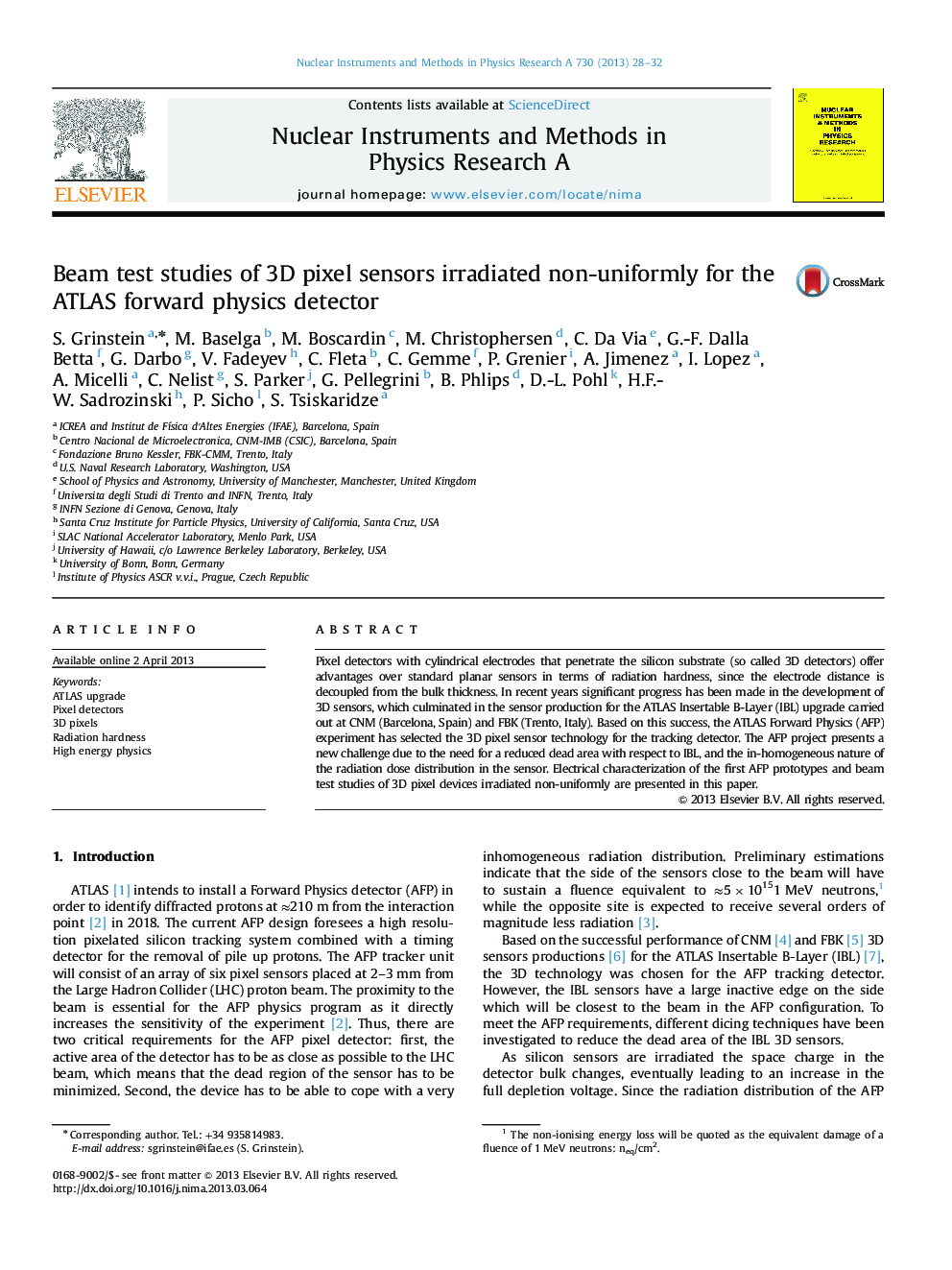| Article ID | Journal | Published Year | Pages | File Type |
|---|---|---|---|---|
| 8178715 | Nuclear Instruments and Methods in Physics Research Section A: Accelerators, Spectrometers, Detectors and Associated Equipment | 2013 | 5 Pages |
Abstract
Pixel detectors with cylindrical electrodes that penetrate the silicon substrate (so called 3D detectors) offer advantages over standard planar sensors in terms of radiation hardness, since the electrode distance is decoupled from the bulk thickness. In recent years significant progress has been made in the development of 3D sensors, which culminated in the sensor production for the ATLAS Insertable B-Layer (IBL) upgrade carried out at CNM (Barcelona, Spain) and FBK (Trento, Italy). Based on this success, the ATLAS Forward Physics (AFP) experiment has selected the 3D pixel sensor technology for the tracking detector. The AFP project presents a new challenge due to the need for a reduced dead area with respect to IBL, and the in-homogeneous nature of the radiation dose distribution in the sensor. Electrical characterization of the first AFP prototypes and beam test studies of 3D pixel devices irradiated non-uniformly are presented in this paper.
Related Topics
Physical Sciences and Engineering
Physics and Astronomy
Instrumentation
Authors
S. Grinstein, M. Baselga, M. Boscardin, M. Christophersen, C. Da Via, G.-F. Dalla Betta, G. Darbo, V. Fadeyev, C. Fleta, C. Gemme, P. Grenier, A. Jimenez, I. Lopez, A. Micelli, C. Nelist, S. Parker, G. Pellegrini, B. Phlips, S. Tsiskaridze,
